ctscan
Latest

Molecule-level 'CT scans' could lead to faster drug discovery
Scientists like to use x-rays when determining chemical structures to develop drugs, but it's an agonizingly slow process. As they need large, pure crystals, it can take weeks or even years to produce something big enough for studying. However, that time might be cut down to a matter of minutes. Researchers have developed a CT scan-like technique that can quickly and easily detect the shape of very small organic molecules. It borrows elements of the x-ray technique, but doesn't demand the large crystals.

TSA plans wider expansion for 3D luggage-scanning machines
The TSA had already planned to expand its pilot program using specially-designed CT scanners to screen airline passenger luggage from tests in Phoenix and Boston to major airports in Chicago, Los Angeles and Washington-Dulles. By the end of 2019, they envisioned spreading 145 of these machines in security checkpoints across the country. But it seems the tests have gone so well that the agency is increasing its order to 200 scanners in the next year, the TSA chief told Congress today.
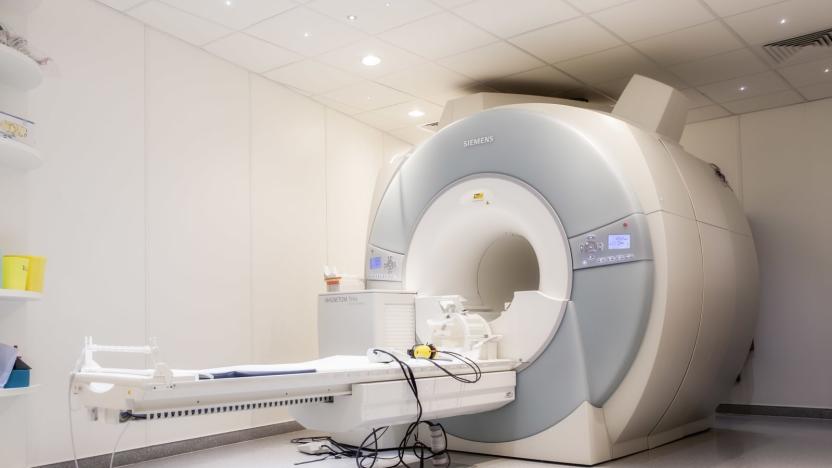
Facebook and NYU researchers aim to use AI to speed up MRI scans
Facebook is teaming up with researchers at the NYU School of Medicine's Department of Radiology in order to make MRIs more accessible. Scientists with the Facebook Artificial Intelligence Research (FAIR) group and NYU note that getting an MRI scan can take up a fair amount of time, sometimes over an hour, and for people who have a hard time laying still for that period of time -- including children, those who are claustrophobic or individuals with conditions that make it painful to do so -- the length of a typical MRI scan poses a problem. So the researchers are turning to AI.
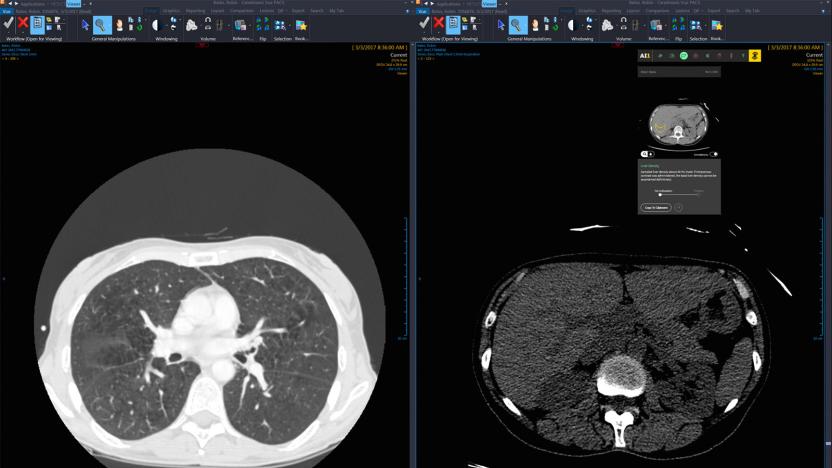
For a dollar, an AI will examine your medical scan
A company called Zebra Medical Vision (Zebra-Med) has unveiled a new service called Zebra AI1 that uses algorithms to examine your medical scans for a dollar each. The deep learning engine can examine CT, MRI and other scans and automatically detect lung, liver, heart and bone diseases. New capabilities like lung and breast cancer, brain trauma, hypertension and others are "constantly being released," the company says. The results are then passed on to radiologists, saving them time in making a diagnosis or requesting further tests.

ICYMI: The US Government wants to limit big rig speeds
try{document.getElementById("aol-cms-player-1").style.display="none";}catch(e){}Today on In Case You Missed It: The National Highway Traffic Safety Administration is proposing to mechanically limit the speed of buses and semis over 26,000 pounds to under 68 miles per hour. The idea focuses on safety concerns but also would improve fuel efficiency.
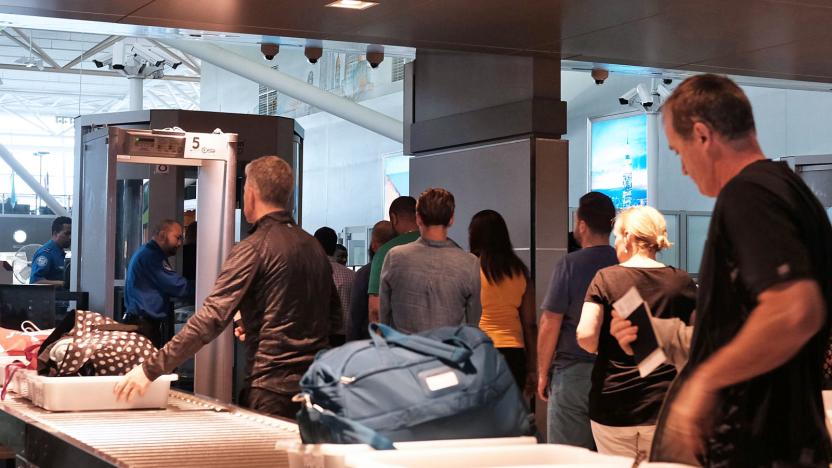
American Airlines to test automatic security screening this fall
It's bad enough that US airports engage in security theater that seldom makes you safer. However, it's made that much worse by the delays -- having to wait for agents to X-ray your bags is frustrating when you're desperate to get to your gate. American Airlines and the Transportation Security Administration aren't deaf to your complaints, though. They're partnering on a trial this fall for automatic screening technology that should be both more effective and save about 30 percent of your precious time in line. Among the improvements are automatic conveyor belts, a way of isolating risky bags without disrupting the queue, RIFD tags for bins and cameras that link outside photos of a bag to its X-ray.

ICYMI: Robot running buddy, mechanical sea life and more
#fivemin-widget-blogsmith-image-97080{display:none;} .cke_show_borders #fivemin-widget-blogsmith-image-97080, #postcontentcontainer #fivemin-widget-blogsmith-image-97080{width:570px;display:block;} try{document.getElementById("fivemin-widget-blogsmith-image-97080").style.display="none";}catch(e){}Today on In Case You Missed It: A horse-sized, standing CT scanner has been invented to keep your equine pals from being tranquilized before images are taken; a sea urchin mouth was used as inspiration for a robot that could be sent to Mars to collect samples; and NASA engineers and MIT students created a robot for Puma that can be programmed to 'race' training runners. If you're less of a runner, more of an observer, the Kung Fu art of Tobias Gremmier may be more your speed. As always, please share any great tech or science videos you find by using the #ICYMI hashtag on Twitter for @mskerryd.
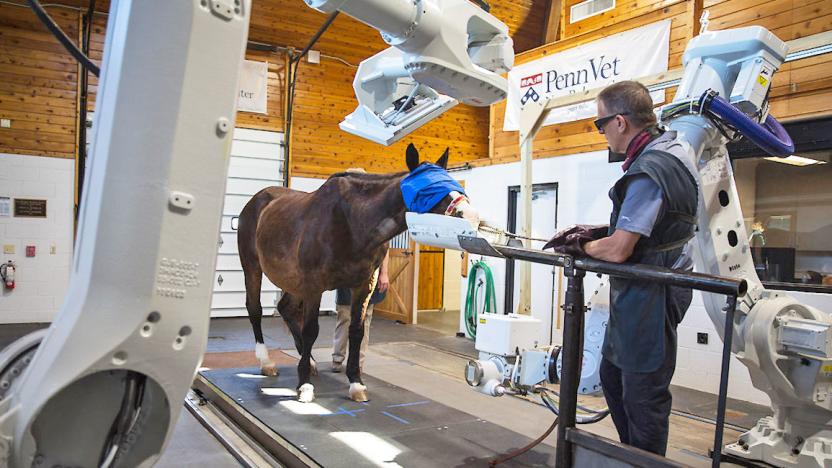
Equine CT scanner can peek inside standing, conscious horses
Horses are majestic creatures, but one thing they are not is tiny. Well, not for long, anyway. That creates a problem for equine medicine. When an animal weighs just under an imperial ton and is six-foot tall at the shoulders, there's only so much a veterinarian can do while the animal is still conscious. To that end, the University of Pennsylvania School of Veterinary Medicine (phew) is partnering with imaging outfit 4DDI to make free-standing CT scans a reality. Dubbed "Equimagine," the setup uses a pair of robotic arms that can gather internal images of a horse while it's awake and standing on all fours.
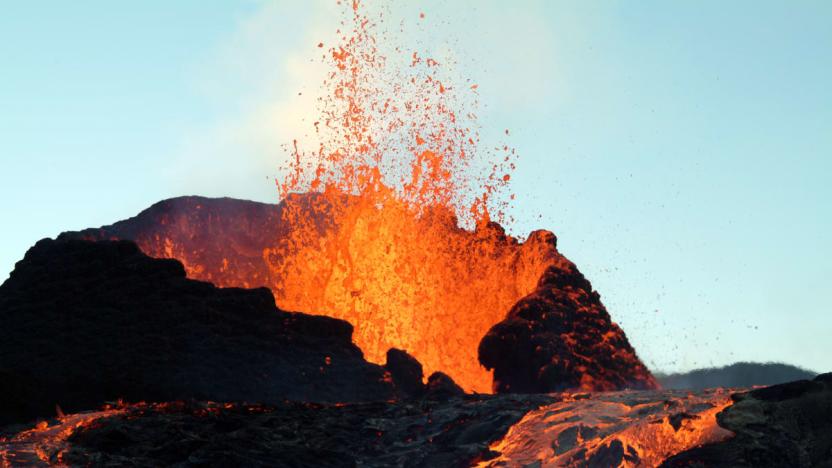
First 3D map of Earth's interior shows where volcanoes come from
It's no secret that Earth's volcanoes are the result of magma rising through the planet's mantle, but have you wondered just where those 'roots' run? UC Berkeley can provide an answer. It just created the first-ever detailed 3D map of the Earth's interior by studying the path of seismic waves. The model shows mantle plumes (where the hot rock flows) starting at the bottom of the core-to-mantle boundary and climbing to the top, where they connect to volcanic hotspots in the Earth's crust. As it turns out, the plumes don't take a straight path -- they often spread out as they merge with the colder upper mantle. It's also clear that most of the world's volcanoes (such as those in the Pacific's island chains) ultimately come from two large "blobs" of hot rock at the core boundary.

Museum teams up with Samsung to render mummies in 3D (video)
Thanks to more advanced medical CT scanners, we can now look at what's inside the British Museum's mummies... even if they remain wrapped. The museum has partnered with Samsung to provide 3D visuals for eight mummies of people who lived in the Nile Valley as far back as 4,000 years ago created using high-res CT scans. These visuals (some of them even interactive) show you what lies underneath all those mummified layers, from accessories and hairstyles that indicate their status in life, to the state of their health when they passed away. For instance, you'll see that a man of high status was buried with gold leaves and facial features painted on his wrappings, while a lowly temple doorkeeper had his severed head roughly reattached with wooden poles. The exhibit's already live for anyone interested in (digitally) peeling layers off the ancient remains, and it'll be around until November 30th this year.

Virtobot scanner performs 'virtual autopsies,' no body-slicing necessary (video)
Grossed out easily? If so, we suggest you hand this article off to someone more calloused while you read all about our recent Windows Phone 7 Series discoveries. For those of you still here, the Virtobot is one of the more ominous robots we've seen; used currently at the University of Bern's Institute of Forensic Medicine, the creature is capable of performing "virtual autopsies." In other words, corpses can be slid within the 3D scanner for investigation, all without ever cracking open the skull or slicing the cold, pearly skin. The goal here is to provide investigators with information on deaths even years after they happen, possibly after new evidence is dug up. It's hard to say what this means for you here on this Earth, but you can rest assured that 187 you were pondering might be a wee bit harder to get away with now. Video after the break, if you're dark enough to handle it.







